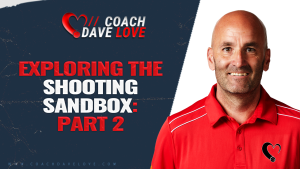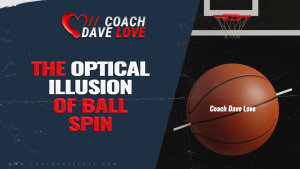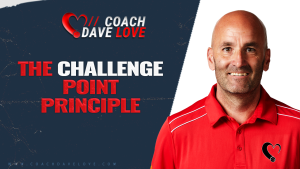I alway make sure to say in a coaches clinic that my job is MUCH easier than the job of a youth coach.
This is usually met with strange looks from youth coaches. After all, I work with players that no other coach has been able to help to that point in their career. Plus, everyone assumes the ego of an NBA player must make my job harder (it doesn’t, they are great to work with).
Then I go on to explain why my job is way easier than a youth coach. The youth coaches usually start to smile.
“I get players, one on one, in a great gym, with people to rebound for me, and multiple basketballs. I have as much time as I want with players, outside of their regular practice time, and can see them every day. And all I have to do is focus on their shooting.”
“Youth coaches have 12+ players, all at one time, with 90 minutes to cover EVERY skill in the game, plus in many cases teach players the basic RULES of the game.”
I’m going to try to put myself into the typical youth practice setting and give you an idea of the things I would focus on. This will not be accurate to all leagues in all countries at all levels. Just a vast generalization that I hope helps you.
FOCUS ON DEVELOPMENT
Winning is fun, don’t get me wrong. And fun should be a huge part of why young players play the game. Absolutely strive to have fun.
But worry more about DEVELOPING players than you do about winning games. And in many cases, if you can focus on the development of the skills of your players, you are going to end up winning games.
I would spend more time on teaching skills than I did teaching plays, especially at young ages. I would try to define about 4 different skills within the game that players needed to improve, and then hold myself accountable to making sure my players were better at those skills by the end of the season.
PICK A BATTLE YOU CAN WIN
Within all the skills and micro-skills that you can pick to work on, make sure you focus on skills the players are actually capable of developing.
For example, I don’t allow players under 11 to attend my clinics. There are a few reasons why, but the biggest is they aren’t physically strong enough to be able to shoot well in their upper body. No matter how hard they try, their physical strength is going to hold them back.
If you are coaching a team of 8 year old girls, I wouldn’t focus at all on shooting a one handed shot. The players won’t be strong enough no matter what you do, or what they do. So if you decide to fight that battle you are almost certainly going to lose, and it won’t be your fault or the fault of the players.
Pick a battle you CAN win. Invest your energy there. Players will be strong enough to have their feet wider, so that is a battle I CAN win. And then, when the players ARE strong enough, hopefully they can turn all their attention to getting their guide hand off the ball, because they’ve already developed good habits with their feet.
Avoid trying to teach EVERYTHING, and never winning any battle, and having to start over again the next year.
PROGRESS OVER THE SEASON
Keep in mind that your goals are long term. In fact, a youth basketball coaches goals are so long term that they might not even be the coach of the team when the pay-off finally comes.
Don’t fall into the trap of expecting players to develop a habit in one drill, or one practice, or even one month worth of practice. Focus on just trying to be BETTER than they were. If the players balance is a C- at the beginning of the year, but a B+ by the end of the year, THAT IS HUGE PROGRESS.
So string together a series of small victories over a long period of time, rather than a quick win.
HAVE A FOCUS TO EVERY DRILL
To help with the small victories, make sure you have a focus for any drill you do. Clearly define for the players “to do this drill well you will need to do THIS…” Then try to hold the players accountable to building that habit. Make them aware. Support them. But hold them accountable.
LOGISTICS
Unfortunately I can’t give clear descriptions of everything I would do in every practice with every level of player. You need to develop a FEEL for what is needed. But here are some of the FAQ you may have…
How much time should we spend on shooting? Generally, I don’t think you can go wrong dedicating 25% of your practice time to shooting. Remember, the best team that can shoot isn’t going to score.
What should group shooting look like? With young players, I would start with form shooting every practice. Remember to progress slowly. You may end up doing one progression of form shooting for 4 practices before adding a layer. Win the battle you are fighting, even if it takes you all year. Give players time to focus on details, don’t be in a hurry to make it “game speed” if your focus is on development.
Every player has different bad habits, where do you start? Every player can improve their balance. So if there is a group drill that has any kind of movement to it, you can preach balance. Otherwise, time to get creative! Can you break up the players into groups based on the habits they need to focus on? All the kids working on their guide hand at one end, and all the kids working on not rotating their body at the other…
What is the best drill for….? Don’t focus too much on DRILLS. Focus on HABITS and SITUATIONS more. You can use variations of form shooting to improve habits, then add layers to increase the challenge. Then learn to apply those habits into the settings that occur in games.
If you want even more help, make sure to sign up for my FREE SHOOTING NEWSLETTER. Then head over to my STORE and check out my online workout programs for drill progressions to build better shooting habits.



